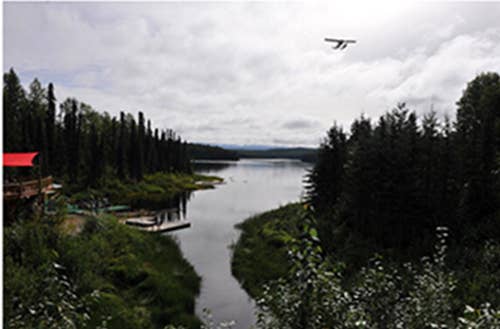
The National Transportation Safety Board met April 25 to detail its investigation into the June 2015 midday crash of a turbine Otter sightseeing aircraft in mountainous terrain 25 miles east of Ketchikan, Alaska. Operated by Promech Air Inc., of Ketchikan, the accident claimed the lives of the pilot and all eight passengers.
The investigation uncovered nothing mechanical with the aircraft or in the pilot’s physical condition that would have led to the accident. The pilot’s experience was found to be limited with just two months of local air tour flying experience. He also reportedly had difficulty calculating the risks of flying in marginal weather in the area.
The Otter pilot filed a VFR flight plan for the Part 135 flight departing Rudyerd Bay about 44 miles east-northeast of Ketchikan headed for the operator’s base at the Ketchikan Harbor Seaplane Base, a flight of between 50 and 60 nm depending upon the route flown.
Promech pilots flew the trip often enough to have created two standard routings, one shorter than the other. The longer route took aircraft predominantly out over water and was preferred in poor weather. The pilot of the accident aircraft chose the shorter route that day because he was already running late. The shorter route brought aircraft over land that included rising terrain. As the pilot approached Ketchikan, the weather began to deteriorate, but he continued on, the Board believed, because his passengers were also late for their arrival to board a cruise ship in Ketchikan. Adding to the pilot's pressu was his awareness of additional air tours awaiting his arrival back at the base as soon as he could deplane the cruise passengers.
The pilot ended up flying the Otter at an altitude that would have been safe on the longer route, but one that proved to be too low to clear terrain along the shorter route in the deteriorating weather. There was no evidence of the aircraft attempting to turn around once it encountered the clouds and it impacted the mountains at the 1,600-foot level. Two seconds prior to impact, however, the aircraft pitched up rapidly, most likely the Board thought, due to the pilot’s last minute attempt to avoid the terrain.
Contributing to the accident, the NTSB believed was a terrain awareness and warning system that may have created so many alerts due to the aircraft’s low altitude, that the pilot might well have begun interpreting them as a nuisance. While company procedures normally demanded flight decisions be made jointly between the pilot and the dispatcher, no such oversight existed for the accident flight. Finally, Promech’s culture fostered by the company president, of pushing people and schedules beyond normal limits, may have served as examples the pilot believed he was expected to emulate.
In addition to 10 safety issues identified by the NTSB during the investigation and two dozen findings, the Board said the probable cause came down rather simply to “the pilot’s decision to continue visual flight into an area of instrument meteorological conditions that resulted in his geographic disorientation and controlled flight into terrain.”
The NTSB did add, however, that “Promech’s culture tacitly endorsed flying in hazardous weather and failed to manage the risks associated with the competitive pressures affecting Ketchikan-area air tour operators. The company lacked a formal safety program and provided inadequate operational control of flights.”

Subscribe to Our Newsletter
Get the latest FLYING stories delivered directly to your inbox






